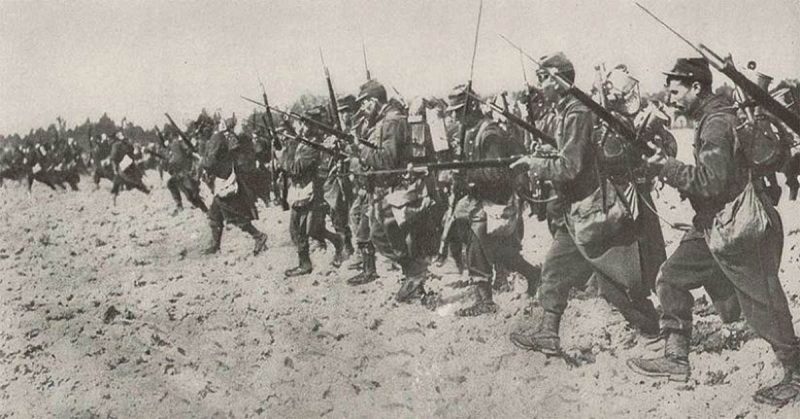The bayonet, capable of turning a gun into a stabbing weapon, has been a feature of warfare since the 17th century.
It has gone through some changes in that time.
Before the Bayonet
Before the bayonet was invented, most infantry were divided into two types – those carrying muskets and those carrying pikes. The pikemen were vital at close range, as they could hold off cavalry charges as well as being effective against infantry in close combat.
However, every man armed with a pike was one not armed with a gun, reducing the firepower that a formation could deliver. Also, if Musketeers were caught by enemy cavalry or pikemen, they were very vulnerable.
Knives from Bayonne
The bayonet takes its name from the southwest French town of Bayonne.
For some time, hunters in France and Spain had been jamming knives into the muzzles of their guns. They did this for better protection against dangerous game such as angry boars.
It was at Bayonne that a new type of hunting knife was invented in the 16th century. With a tapering cylindrical grip, flat blade, and wide cross-guard it was ideal for this use. These knives became popular with hunters and were known as “Les bayonettes de Bayonne.”
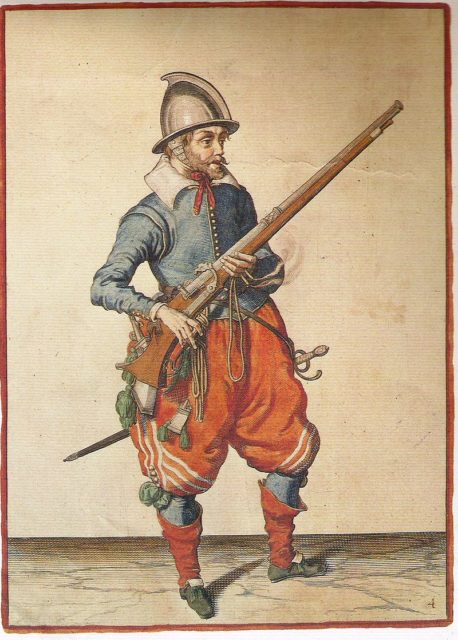
Unsurprisingly, it was the French who first brought these knives to war. The first recorded use was in the Netherlands around 1647. There the troops carried bayonets with blades and hilts around 12 inches long.
Their use quickly spread and 16 years later the British had used them long enough for some to need refurbishing.
The Plug Bayonet
The Bayonne knife was a form of plug bayonet, and this was the style that first spread across Europe. The handle was designed to be jammed into a musket barrel, an easy way of fixing the blade in place.
Plug bayonets made musketeers into efficient close combat infantry, an improvement on having separate men for each. They did have some serious drawbacks.
If a gun was fired while the bayonet was in place, the gun might explode. This happened so often that in 1660 Louis XIV of France had to ban hunters from putting knives in their weapons.
The other drawback was that even trained troops, who knew better than to blow themselves up in this way, could not fire while their bayonets were fixed.
The Jacobite victory over a British army at Killiecrankie, Scotland in 1689 occurred because bayonets prevented effective volley fire.
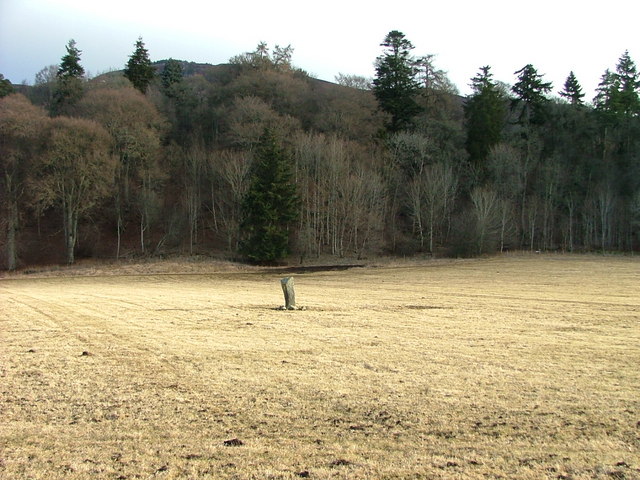
The Ring Bayonet
The next improvement was the ring bayonet. We do not know who thought of this idea, although one early enthusiast was Hugh Mackay, a Scottish officer serving William of Orange in the 1680s and 1690s.
The ring bayonet had a pair of rings attached to its handle. These were large enough to slip over the barrel of a musket enabling the gun to be fired while the bayonet was in place.
The downside of the ring bayonet was that it did not always fit securely in place. It could fall off or be pulled off by an enemy.
With the ring bayonet, soldiers could use both the gun and the blade, as long as the two remained attached.
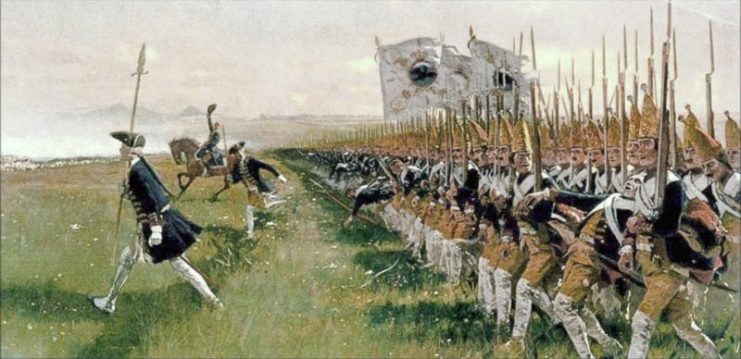
The Socket Bayonet
By the mid-18th century, the ring bayonet had been entirely replaced by the more reliable socket bayonet. This was a blade attached to a tube which fitted neatly over the barrel of a gun and could then be locked into place.
Faults with the locking systems meant various types were used during the heyday of the socket bayonet, which ran from the mid-18th to mid-19th centuries.
One problem remained with the bayonet. Its weight affected the balance of the gun it was attached to, reducing accuracy. This did not matter much during the era of muskets, which were so inaccurate they were only effective in large blocks. In the 19th century rifles became the norm, precise accuracy was possible, and the bayonet became a hindrance.
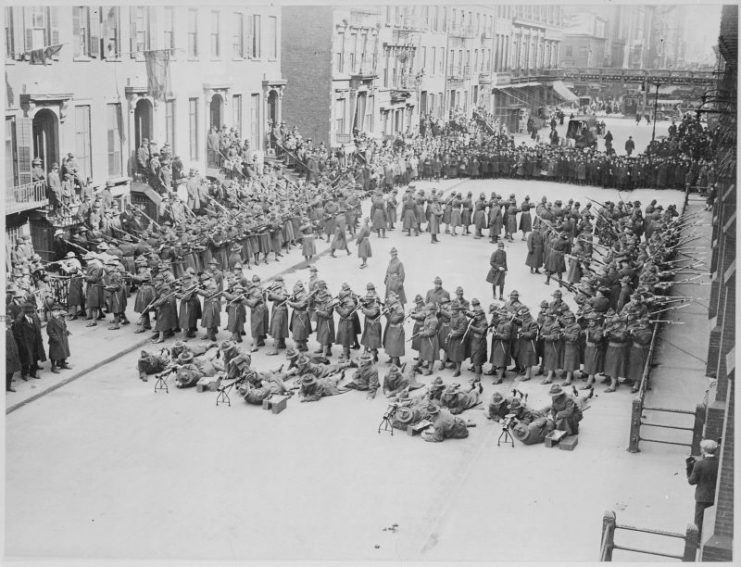
Fortunately, the rifle also made the bayonet unnecessary. Greater firepower covering larger areas meant close quarters fighting was less likely. The use of bayonets fell, to the point where bayonets caused only an estimated 0.024% of American casualties in the First World War.
Anti-Cavalry Knives
It was still useful to have a knife, but the socket of a bayonet did not have a good grip for this. New bayonets were developed which used a single ring and a stud on the gun to fix them in place, or which attached to a bar underneath the rifle barrel.
These often had long blades, as it was expected they would be used to fend off cavalry.
Short Knives
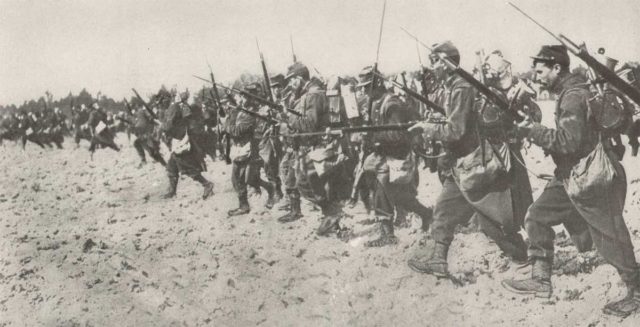
In reality, cavalry were in decline, a decline made more sudden by the First World War. This led to a further change in the design of bayonets.
The most useful knife for a soldier was now a shorter one. Something they could use in very close quarters combat or for day-to-day tasks like cutting rope and opening cans.
The blades became shorter. The M1917 bayonet of World War One was 17 inches long. By the start of World War Two, the M1 Garand rifle had a blade 10 inches long, shrinking to 6.7 inches on a later version.
Specialist Bayonets
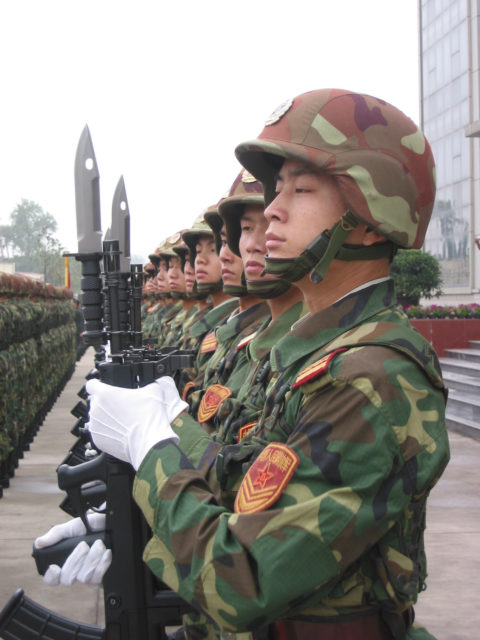
As with many weapon technologies, the 20th century saw a growth in specialization in bayonet design. Blades were created that could also be used as other tools. British and German troops carried bayonets with saws on the back.
The United States tried the trowel bayonet. Intended as both a weapon and an entrenching tool, it proved ineffective as either. Most modern bayonets come with a scabbard that can turn them into wire cutters.
Once an improvised substitute for the pike, the bayonet is now a multi-purpose tool of the infantry soldier.
Sources:
- Richard Holmes, ed. (2001), The Oxford Companion to Military History.
- William Weir (2006), 50 Weapons that Changed Warfare.
